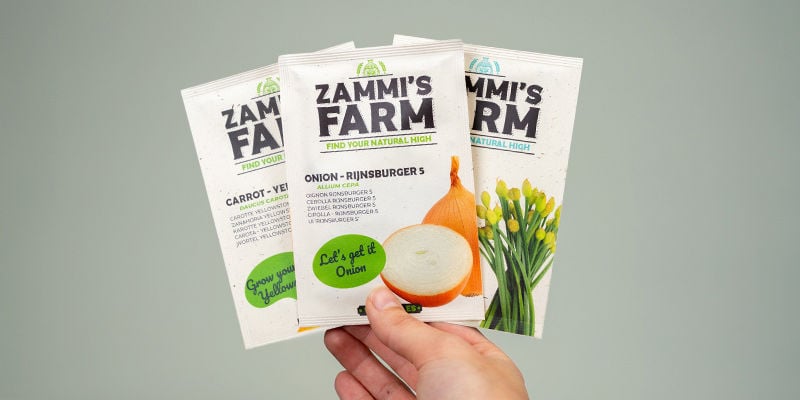
Best Fruits And Vegetables For Cold Climates
So, you live in an area with a short growing season? Your garden freezes over late in spring and early in autumn? While you won't have any luck trying to cultivate tropical, heat-loving plants, there are many different species that will thrive in your growing space! Enjoy big yields of onions, nourishing leafy greens, and tasty apples.
Are you doubtful about growing your own food because of cold weather? Well, don’t let a bit of frost stop you! There are plenty of fruits and vegetables that do just fine in cold climates. Below, you’re going to discover everything you need to consider when growing in such a region, alongside the plants that perform the best.
Catering for colder climates
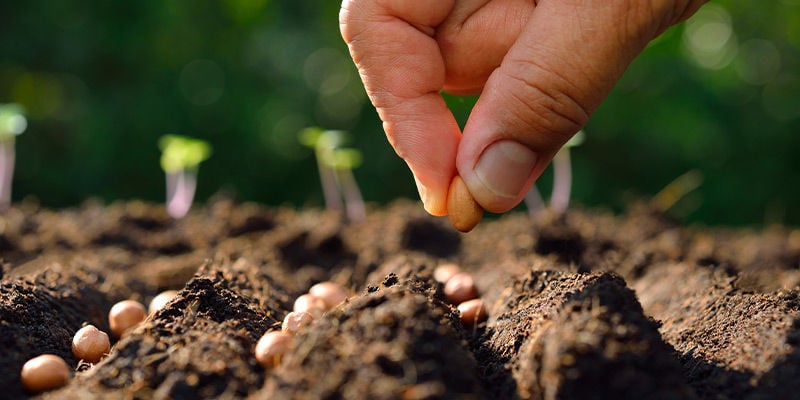
If you happen to live in a colder climate, you likely spend much of your time feeling envy towards those in warmer regions. Scrolling through Instagram, Pinterest, and other platforms frequented by plant mums and dads, you feel left out watching people show off everything from cacti to mango, papaya, and banana trees. But don’t feel dismayed! Although living in a region with a shorter growing season definitely limits what you can cultivate, there are still so many options when it comes to growing food throughout the year.
In a way, living in a cooler climate comes with its own advantages. You’ll become more in tune with each season as the years pass, you’ll know exactly what to plant and when, and you’ll get some serious downtime during the autumn and winter months to enjoy your harvest.
Our ancestors survived in far northern and southern latitudes for millennia, largely owing to their agricultural skills and knowledge. Crops such as potatoes, berries, alliums, and apples kept them energised and nourished. Not all plants are as soft as those that grow closer to the equator. Hardy plants suitable for far northern and southern regions possess a range of traits that make them compatible with these areas, including:
- Cold tolerance
- Frost resistance
- Quick turnaround
So, let’s take a trip back to our roots. Keep reading to find out when to sow certain seeds, what problems a colder climate presents, and which plants will provide you with a bountiful yield.
When to sow your seeds?
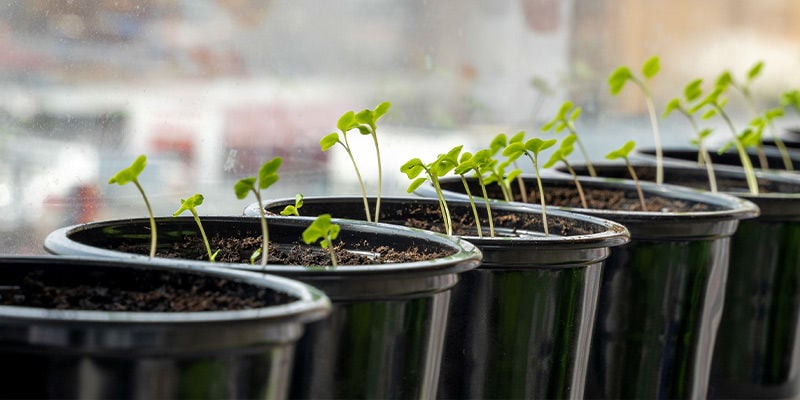
If you’re looking to maximise production, then you’ll realistically need to continually sow seeds all throughout the spring and summer months. This means you’ll always have well-developed seedlings to hand, ready to replace whatever you harvest.
With that in mind, here are the key times in which you can sow seeds in a lecooler climate:
- Early spring sowing: Growers can start to sow seeds as early as February. While the vast majority of plants won’t handle outdoor conditions at this time, they’ll thrive on a windowsill or under the protection of a greenhouse or polytunnel. Potential options at this time include the hardiest of edible plants, such as broad beans, lettuce, peas, and cabbage.
- Late spring/summer sowing: Growers need to start sowing more warmth-loving plants around April and May. Beans, sweetcorn, squash, pumpkin, cucumber, and tomatoes need warmth to thrive. Bush and dwarf varieties of these plants do well even in very short growing seasons.
- Season-long successional sowing: Sowing crops such as peas, radish, lettuce, carrots, and beetroot every week or two will ensure a steady harvest rate. Sow too many seeds at once, and you’ll end up with a glut that you’ll either have to process to store or give away.
- Overwintering: Overwintering involves sowing during summer to harvest next spring. They won’t grow much over winter, but they’ll explode in growth during spring and provide an early harvest. However, plants need to be relatively well-established before the winter arrives. Spinach, kale, and mustard all do well when sown under cover during mid-September.
Potential problems with cold-climate grows
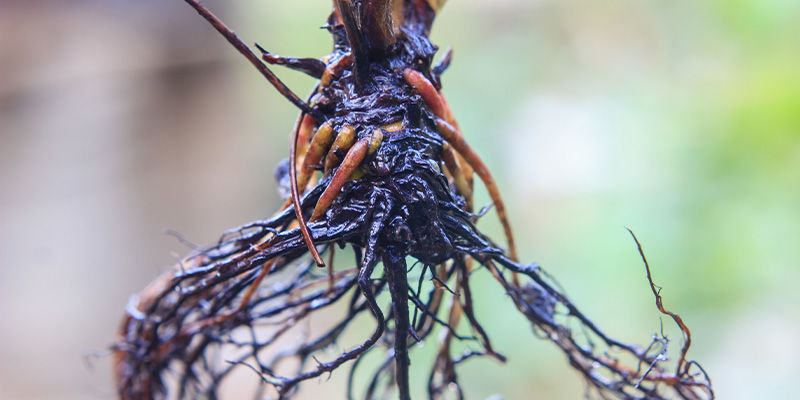
Every growing climate comes with its own troubles. While warm and tropical regions threaten disease and drought, cooler regions have their own difficulties. Discover the chief concerns when growing in cold climates below:
- Fluctuating frost dates: Several edible plants can handle hard frosts, but most simply aren’t equipped for this. Selecting the right varieties can help to reduce the damage caused by unreasonably late frosts. However, surprise sub-zero temperatures during late April and May can do some serious damage to any vegetable garden. Combine hardy varieties with frost protection measures, such as row covers, to avoid this upset.
- Pests: Many pests start to emerge in colder climates during late spring and summer. These include hungry deer, tunnelling moles, berry-devouring birds, and Brassica-decimating cabbage white butterflies. There are a range of integrated pest management (IPM) strategies to deal with these threats, including netting, predatory insects, and companion planting.
- Diseases: Colder climates can predispose plants to an increased risk of disease, especially during cloudy and rainy growing seasons. High humidity and relentless rain almost always result in mildew on cucurbits and blight on tomatoes and potatoes.
- Root rot: Excess rain and a lack of sun can cause soil to remain extremely damp. While some plants take no issue with this, others cannot tolerate such damp soil and will succumb to root diseases.
Best fruits & vegetables for cold climates
You’re now aware of some of the problems that a cold climate can present. However, you also know that it’s possible to harvest bountiful yields in these regions. Next up, you’re going to learn all about the best fruits and vegetables to grow in cold climates.
Onions

Onions are an important staple crop for many growers that live in cold climates. They’re easy to grow, take up little space, and can be stored for months after harvest. Before sowing your onions, amend your growing area with lots of organic matter to keep them fertilised and to enable their small root systems to penetrate the growing medium.
There are two ways to grow onions: from sets or from seeds. Sets grow quicker and are less prone to disease, but are more likely to bolt during stressful conditions. When growing onions from sets, you’ll typically need to sow them during March and April. However, hardy cultivars can go in the ground at any time between October and March. Use a stick or trowel to create 2cm-deep drills, and sow your sets 5–10cm apart in rows 30cm apart.
If you’d rather grow your onions from seeds, sow them into modular trays indoors in late winter. Place them on a windowsill and use a heated propagator to speed up the process, and transplant outside in spring.
Garlic

Garlic is an extremely cold-tolerant plant. It stores well over a long period and adds some serious flavour to a wide variety of dishes. There are two types of garlic that thrive when gardening in a cold climate:
- Hardneck: This type of garlic produces fewer, bigger cloves and offers a more potent flavour. It also has a shorter storage time and lasts until around the middle of winter.
- Softneck: This type of garlic produces a greater number of smaller gloves. It’s slightly less flavourful and can be stored until the middle of spring.
When growing garlic, amend with plenty of organic matter, such as well-rotted manure. Create drills of around 3cm deep and place rows 30cm apart. Space cloves 15cm apart in each drill.
Apples

Growing apples is a huge rabbit hole. There are many to choose from, including dwarf, columnar, cooking, cider, and edible varieties. Regardless of the type that you choose to grow, there are some general rules that apply across the board. First, apple trees prefer to be planted during the colder months, between November and March. You’ll also need to water them well during the first growing season to help their root systems develop.
Apple trees take some time to become productive, but they’ll reward your patience in the coming years with huge yields. Overall, apples are an excellent choice of fruit tree in cold climates, and grow well as far north as Norway.
Broccoli

Broccoli is among the most frost-tolerant of all vegetables and can handle temperatures of just below -3°C. As a cruciferous vegetable, broccoli also provides a wealth of healthy sulphur compounds. There are many different varieties of this plant, and each features a slightly different cropping cycle. Traditional cultivars are sown in April and produce all the way through late summer into early spring. Quicker, newer cultivars are sown in mid-summer and ready to harvest in autumn.
Broccoli thrives in cold climates and actually dislikes warmer weather, which causes plants to bolt (go to seed). Plants prefer fertile and firm soil with good drainage and a pH of 6–7. Consider sowing in small batches week by week for a steady influx of fresh stems at harvest time. Direct sow in 2cm-deep drills and ensure a distance of 7.5cm between seedlings. Use netting to repel cabbage white butterflies that can cause serious damage to all members of the Brassica genus.
Pears

Just like apples, there are many types of pears to choose from. Cultivars vary in everything from their size and structure to productivity and the taste of their fruits. Pears thrive in cold climates and are a great source of fruit, which can be eaten fresh or used in countless recipes. You’ll find two different types of pear trees to grow at home:
- Bare-root trees: As their name suggests, these trees arrive with their roots totally exposed. They’re available during the off-season, and growers must plant them straight after purchasing.
- Container trees: These trees arrive in containers with their roots already anchored into the soil. Growers can transplant these trees at any point in the year, from summer to winter. However, they do best when moved to their new home in early spring.
Make sure to frequently water your pear tree during its first season to promote optimal root development. Feed with a high-potassium fertiliser during spring and apply a generous mulch close to the trunk during this time.
Kale

Alongside broccoli, kale also belongs to the Brassica genus. This tough leafy green can handle hard frosts, and actually looks very pretty when adorned with a sheet of frozen dew. Plants also ramp up sugar production during cold bouts, making them sweeter and more pleasant to eat. There are many different types of kale available, including curly, smooth, dwarf, and giant. There are also different ways to harvest kale. You can harvest each head in its entirety to use all at once, or treat it as a “cut-and-come-again” crop by only taking a few leaves from each plant at one time.
Aim to sow your kale seeds between March and June. Start them indoors in module trays in the middle of spring. Transplant outdoors as soon as each seedling develops a robust set of true leaves. Transplant with a spacing of 7.5cm.
Spinach

Spinach dislikes warmth—seriously. Sow these seeds late in spring, and you’ll discover that they bolt at the first sign of higher temperatures. This leafy green much prefers the cooler days of autumn and early spring. If you live in an area where heat waves are exceptionally rare, you can get away with sowing spinach anytime between March and May. However, even in areas with a short growing season, you’re better off sowing in September and overwintering your spinach crop.
You can directly sow spinach seeds in polytunnels or outdoors (preferably using low tunnels during autumn and winter) during September. Sprinkle seeds into 2.5cm-deep drills and thin out plants to 20cm apart.
Carrots

Carrots are another staple for many growers in cooler climates. Their sweet and crunchy roots go down great in anything from salads to tray bakes. There are many different cultivars available today, from typical orange to more exotic purple and yellow varieties.
When it comes to growing carrots, it pays to focus on soil structure. To prevent them from becoming stunted or from forking, carrots benefit from loose and sandy soil that accommodates the expansion of their taproot.
Carrots are best sown directly, as transplanting seedlings can harm their roots, and thus your harvest. Sow your seeds at any point from February to July to harvest between May and October. Simply use a stick or trowel to form 1cm-deep drills, and sow as thinly as possible. Thin plants out to 5cm.
Plums
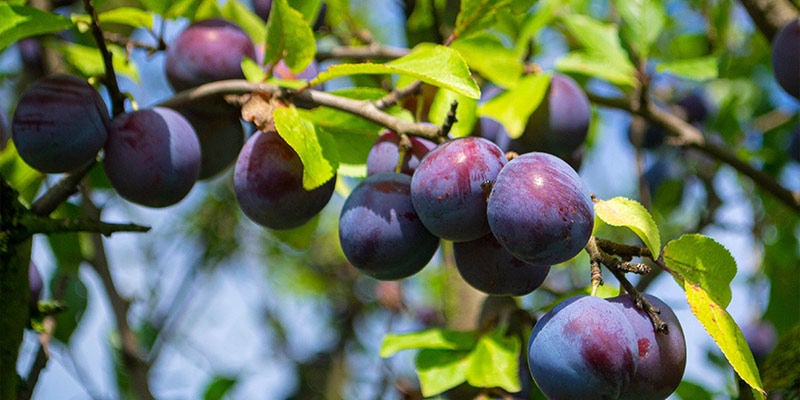
Plums are another type of fruit tree that absolutely thrives in colder growing climates. They’re scrumptious when eaten raw, but make fine jams, cakes, crumbles, and even cider. Growers have a wide variety of full-size, semi-dwarf, and dwarf cultivars to choose from. Aim to plant bare-root trees between November and March, and inoculate with mycorrhizal fungi before planting for best results.
Raspberries

Raspberries are exceptionally hardy and essentially take care of themselves. In fact, you’ll have to put in some work to prevent them from proliferating too much. Cultivate raspberries in containers and raised beds to stop them from taking over your entire garden. Mulch generously with well-rotted manure and compost during spring, and cut plants back at the end of the season to encourage young, productive growth next season.
Chill out — Zamnesia has got you covered
There you have it! If you’re looking to try your hand at gardening in a cold climate, you now know the fruits and vegetables that will make this endeavour as productive and fulfilling as possible. Now, take the next step and start putting your green fingers to work! Head on over to the Zamnesia Plantshop to grab all of the seeds you need to start cultivating your own food. Happy growing!
-
 5 min
3 August 2023
Top 10 Fruits To Grow At Home
Why bother heading to your local grocery shop when you can grow all of your favourite fruits at home? Whether you're in an apartment with a small balcony or staring out over acres of land, you'll...
5 min
3 August 2023
Top 10 Fruits To Grow At Home
Why bother heading to your local grocery shop when you can grow all of your favourite fruits at home? Whether you're in an apartment with a small balcony or staring out over acres of land, you'll...
-
 4 min
19 May 2023
Discover 10 Unique-Looking Vegetables
Do you want to sow some strange and novel fruits and vegetables in your garden this spring? Well, look no further—we’ve got you covered with this top 10 list of odd-looking plants to add some...
4 min
19 May 2023
Discover 10 Unique-Looking Vegetables
Do you want to sow some strange and novel fruits and vegetables in your garden this spring? Well, look no further—we’ve got you covered with this top 10 list of odd-looking plants to add some...
-
 5 min
16 March 2023
Top 10 Easiest Vegetables To Grow
Have you ever considered growing vegetables from home, but thought that your level of expertise or environment was insufficient for the job? Well, here at Zamnesia, we don't believe in such...
5 min
16 March 2023
Top 10 Easiest Vegetables To Grow
Have you ever considered growing vegetables from home, but thought that your level of expertise or environment was insufficient for the job? Well, here at Zamnesia, we don't believe in such...





 United States
United States

